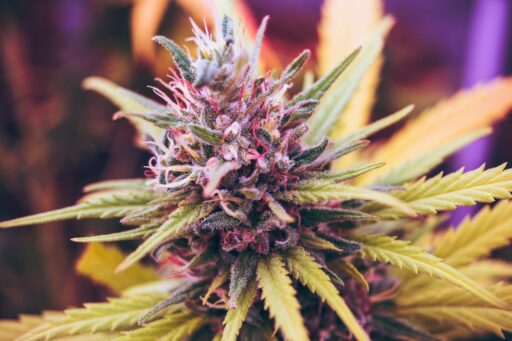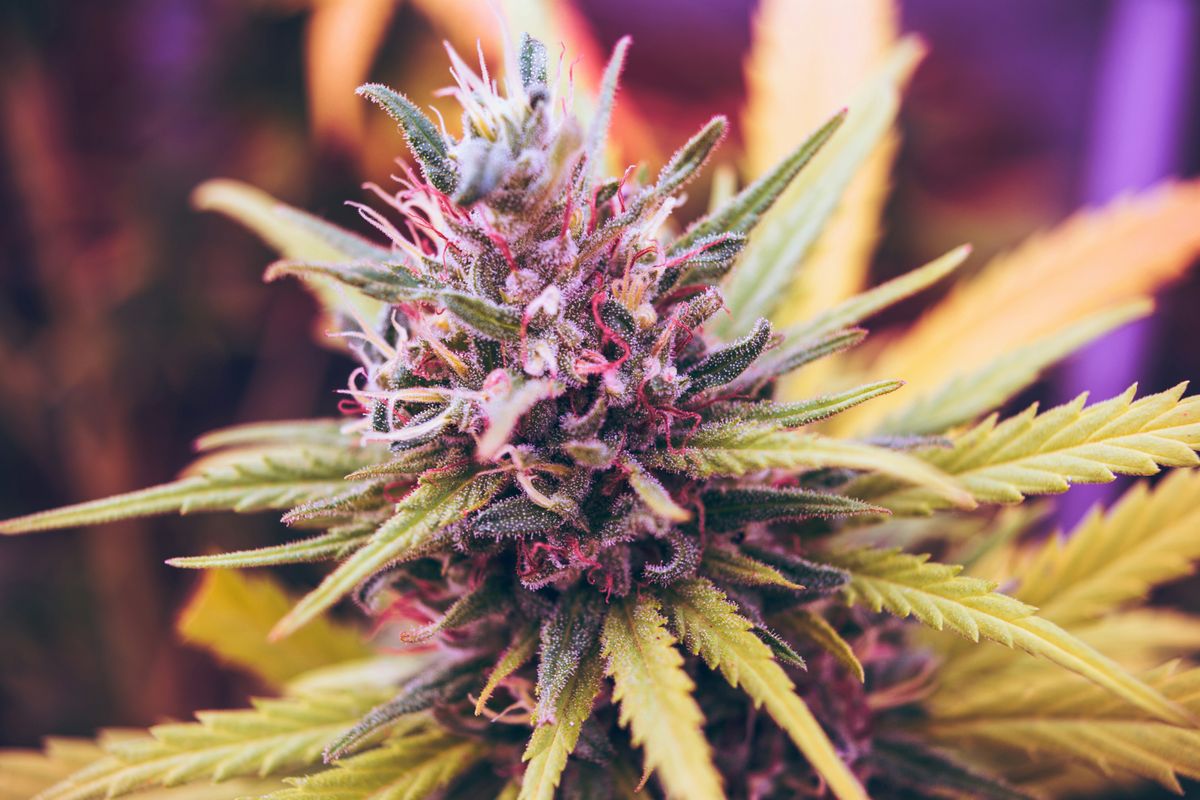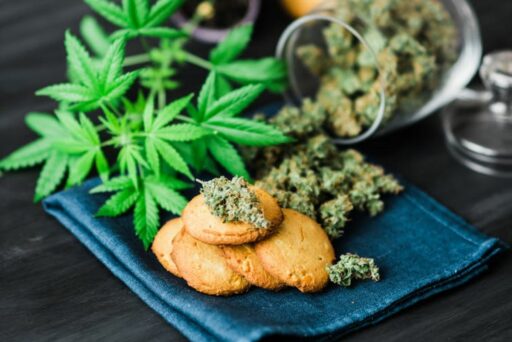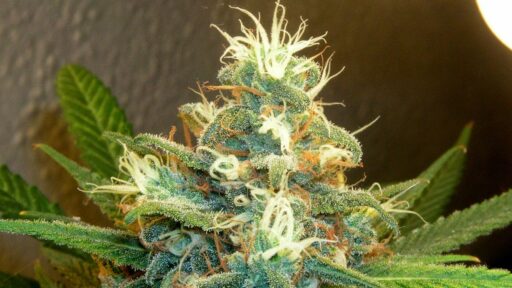The cannabis industry has witnessed a significant transformation, particularly with the rise of marijuana edibles in the market. This phenomenon, often referred to as the ‘Green Rush,’ has seen a surge in consumer demand and a complex interplay with regulatory frameworks. As we unwrap the layers of this surge, we explore the key factors driving the growth of the edibles market, the regulatory challenges faced by local governments, the intersection with psychedelics, the tension surrounding unregulated THC products, and the future innovations and challenges in the space.
Key Takeaways
- The ‘Green Rush’ signifies a booming market for marijuana edibles, with events like MJBizCon highlighting the industry’s growth and key players like VEXT Science and Cheech & Chong’s Global Holding Company shaping the market.
- Local governments are grappling with regulatory challenges, including community impact concerns and the complexities of ensuring safety and compliance for hemp-derived THC products.
- The intersection of marijuana and psychedelics is influencing cannabis culture and consumption trends, with magic mushroom strains and movies like ’26 Movies to Watch on Shrooms’ reflecting crossover interests.
- Massachusetts is facing tension over unregulated hemp-derived THC products, with consumer confusion and safety debates highlighting the need for clarity and oversight in the edibles market.
- Innovations such as triploid cannabis seeds are impacting the market, but unchecked interstate commerce and the anticipation of strain diversity present ongoing challenges for the future of marijuana edibles.
The Green Rush: A Closer Look at the Marijuana Edibles Market Explosion

Understanding the ‘Green Rush’ Phenomenon
The term ‘Green Rush’ is reminiscent of the historical gold rushes, where a surge of prospectors sought fortune. In the modern context, it refers to the booming market of marijuana edibles, where businesses and investors are flocking to capitalize on the burgeoning industry. The allure of high profits and growing consumer demand has led to a rapid expansion of the market.
The ‘Green Rush’ is not just about the products themselves but also the innovative technologies and cultivation methods that are emerging. For instance, the introduction of triploid cannabis seeds promises robust buds and unique terpene profiles, enticing both consumers and cultivators.
The market’s growth is further fueled by the diversification of cannabis products, with edibles taking a significant share. This diversification is not only in the types of products but also in the variety of strains and flavors available.
Understanding this phenomenon requires a look at the key factors driving the market:
- Consumer preferences shifting towards discreet and convenient consumption methods.
- Legislative changes that have opened up new markets.
- Technological advancements in THC extraction and infusion.
- The role of cannabis events in educating and creating a community around marijuana products.
Key Players in the Edibles Market: From VEXT Science to Cheech & Chong
The edibles market has seen a significant influx of key players, ranging from innovative startups to iconic figures. VEXT Science has made waves with its podcast, highlighting the intricacies of the ‘green rush’ and the role of cannabis events in propelling the industry forward. Meanwhile, the legendary duo Cheech & Chong have expanded their comedic legacy into the cannabis space with products like High & Dry Hemp THC seltzers, raising questions about the safety and regulation of such items.
The market’s expansion has been both rapid and diverse, with a spectrum of products that blur the lines between traditional cannabis consumption and mainstream retail.
As the market continues to evolve, consumers find themselves navigating a complex landscape of products. The distinction between dispensary-bought THC-infused drinks and those available in liquor stores has become a topic of discussion, with safety and legality at the forefront. The journey of these products, often crossing state lines, adds another layer to the regulatory puzzle.
The Role of Cannabis Events in Market Growth
Cannabis events have become pivotal in propelling the edibles market to new heights. These gatherings, ranging from industry conferences to consumer expos, serve as melting pots for innovation, networking, and education. They provide a unique opportunity for key players to showcase new products, share insights, and forge partnerships that drive the industry forward.
One such event, MJBizCon, has been particularly influential, putting the industry’s crossroads in the spotlight and highlighting the latest trends and challenges. The impact of these events is not just limited to immediate sales but extends to long-term market growth and consumer awareness.
The surge in popularity of cannabis events underscores their role in shaping the future of the edibles market.
While the edibles category currently represents a small fraction of total cannabis sales, the logistical challenges faced by beverage producers, for example, are often addressed and mitigated through the collaborative efforts seen at these events. The table below illustrates the significance of cannabis events in market expansion:
| Event Type | Attendees | Outcome |
|---|---|---|
| Industry Conference | 10,000+ | Strategic Partnerships |
| Consumer Expo | 5,000+ | Product Launches |
| Educational Seminar | 500+ | Knowledge Sharing |
Navigating the Regulatory Maze: Local Governments and Cannabis Legislation

Cannabis Smell Controversies and Community Impact
The aromatic presence of cannabis has become a contentious issue in communities, with some residents expressing concerns over the pervasive smell. The debate over the olfactory impact of marijuana cultivation and consumption is intensifying, as it intersects with issues of public nuisance and personal freedom.
Local governments are grappling with how to address these concerns while respecting the rights of cannabis users and businesses. Regulations vary widely, with some areas implementing strict odor control measures, and others taking a more lenient approach. This patchwork of policies reflects the broader struggle to balance community standards with a growing industry.
The complexities of regulating cannabis odors highlight the broader challenges faced by local governments in managing the intersection of personal liberties and community standards.
As the market for marijuana edibles continues to surge, the implications for community dynamics are profound. The smell of cannabis, once a sign of illicit activity, is now part of a legal landscape, yet it remains a divisive sensory experience.
The Complexities of Hemp-Derived THC Products
The burgeoning market for hemp-derived THC products is rife with complexities that challenge both consumers and regulators. The variance in product potency and labeling accuracy is a significant concern. A study in the Journal of Cannabis Research highlighted that while most hemp-derived delta-9 products stayed under the legal THC limit, a substantial number deviated from their stated dosages. This discrepancy raises questions about the reliability of product labels and the potential risks for consumers.
The lack of consistent regulation and oversight has led to a market where product safety and consumer trust are at stake.
Moreover, the FDA’s stance on THC and CBD products complicates the landscape further. As they are excluded from the dietary supplement definition, this creates a regulatory void where standardization and quality control are difficult to enforce. The emergence of synthetic versions of THC, such as delta-9 tetrahydrocannabinol, adds another layer of complexity, with products often crossing state lines into markets with varying degrees of regulation.
- Product Potency Variance
- Labeling Inaccuracies
- Regulatory Exclusions
- Synthetic THC Proliferation
- Interstate Commerce Challenges
Ensuring Safety and Compliance in the Edibles Industry
The burgeoning edibles market has necessitated a rigorous approach to ensuring safety and compliance. With a variety of products flooding the market, from THC-infused drinks to gummies, the need for standardized safety measures is paramount. The introduction of new food additives, particularly those not classified as Generally Recognized as Safe (GRAS), presents a unique challenge. Organizations may petition the FDA for approval, but the process is complex and requires meticulous documentation.
The importance of accurate labeling and comprehensive testing cannot be overstated. Consumers rely on information such as pH levels, potency, and contamination lab test results. However, the consistency of this information varies widely. Some products offer detailed disclaimers and lab results accessible via QR codes, while others provide minimal information, leading to consumer confusion and potential safety risks.
To address these concerns, a multi-faceted strategy is essential. This includes:
- Regular pH testing to prevent harm to consumers, such as enamel erosion from acidic beverages.
- Stringent potency regulations to ensure that edibles do not exceed legal limits, like the 5mg per piece law in Massachusetts.
- Cross-state oversight to track the influx of hemp-derived edibles and their compliance with local regulations.
The industry’s future hinges on its ability to adapt and adhere to evolving safety standards, thereby protecting consumers and maintaining market integrity.
Beyond THC: The Intersection of Marijuana and Psychedelics

Magic Mushroom Strains and Their Influence on Cannabis Culture
The intertwining of magic mushroom strains with cannabis culture has led to a fascinating evolution in the way both substances are perceived and consumed. The cross-pollination of ideas between psychedelics and cannabis has given rise to new trends and consumption habits. For instance, the popularity of certain movies to watch while experiencing the effects of shrooms has become a part of the broader cannabis lifestyle, influencing everything from strain preferences to social activities.
- Magic Mushroom Strains – 8 Varieties of Shrooms
- 26 Movies to Watch on Shrooms
- Legendary Pot Breeder Unlocks the Future of Weed
- Marijuana Detox: How to Get THC Out of Your System
The surge in interest for psychedelics has not only expanded the boundaries of cannabis culture but also sparked curiosity in the potential synergies between different psychoactive experiences.
As the market continues to adapt to these crossover trends, consumers are increasingly seeking out edibles that offer a nuanced blend of THC and psychedelic effects. This demand is driving innovation in the edibles market, with producers experimenting with various infusions and formulations to cater to the evolving tastes of their clientele.
The Impact of Psychedelics on Marijuana Consumption Trends
The intertwining of psychedelics and cannabis has led to a fascinating evolution in consumption trends. The rise of psychedelic culture has influenced the perception and use of marijuana, with many users seeking a more holistic and spiritual experience. This shift is not only cultural but also evident in product development, where the blending of cannabis with psychedelic compounds is creating new categories of edibles.
- The popularity of ‘magic mushrooms’ and their strains has sparked interest in similar experiences with cannabis.
- Cannabis events often showcase the crossover between psychedelics and marijuana, highlighting new consumption methods.
- Movies and media representation play a significant role in shaping public perception and interest in psychedelic-infused cannabis products.
The synergy between marijuana and psychedelics is reshaping the landscape of recreational drug use, with edibles at the forefront of this transformation.
As the market adapts to these new demands, it’s crucial to monitor how these trends impact user behavior and market dynamics. The ‘Green Rush’ has indeed taken a turn towards the mystical, with edibles offering a gateway to uncharted territories of the mind.
Crossover Trends: Movies, Breeding, and Detox
The intersection of cannabis culture with other industries is becoming increasingly evident. Movies that cater to psychedelic experiences are trending, with lists like ’26 Movies to Watch on Shrooms’ capturing the imagination of audiences seeking enhanced viewing experiences. Similarly, the art of cannabis breeding is advancing, with breeders like those claiming to have ‘unlocked the future of weed’ pushing the boundaries of strain development.
The health aspect of cannabis consumption is not left behind, as evidenced by the growing interest in marijuana detox methods. Articles like ‘Marijuana Detox: How to Get THC Out of Your System’ are indicative of a community that is as concerned with the after-effects of consumption as with the experience itself.
The synergy between cannabis and other sectors is not just about shared interests but also about shared challenges, such as ensuring safety and navigating the complexities of market regulations.
As the market for cannabis edibles continues to evolve, so too does the dialogue around it, with discussions on topics ranging from the impact of cannabis on historical figures to the comparison of its effects with those of alcohol.
Mass Grass News: Unraveling the Tension Over Unregulated THC Products

The Surge of Hemp-Derived THC Products in Massachusetts
The landscape of hemp-derived THC products in Massachusetts is becoming increasingly complex and fraught with tension. Despite the state’s efforts to regulate cannabis, a wave of unregulated hemp-derived products has emerged, leading to mounting confusion among consumers and authorities alike.
In December 2022, the Massachusetts Department of Agricultural Resources (MDAR) took a definitive stance by prohibiting the sale of hemp products containing delta-8 THC. This move was a response to the growing presence of such items in the market, which had previously skirted under the radar of strict cannabis regulations.
The proliferation of these products has raised concerns about the potential risks associated with unregulated substances. The lack of oversight once the products reach Massachusetts is particularly troubling, as it opens the door to products with questionable content and safety.
Dr. Christopher Hudalla, a leading figure in cannabis testing, has been vocal about the dangers posed by synthetic THC gummies and other hemp-derived items sold outside the regulated market. His observations highlight a critical issue: the origin of these products. It appears that nearly all hemp-derived edibles in Massachusetts, especially those exceeding the legal limit of 5mg per piece, are sourced from out of state, bypassing local production and quality control measures.
Consumer Confusion and the Quest for Clarity
The burgeoning market of hemp-derived THC products has left consumers navigating a labyrinth of uncertainty. The USDA’s 2018 Farm Bill brought some clarity to CBD and other hemp products, establishing a THC threshold of 0.3% to distinguish legal hemp from regulated marijuana. However, the distinction between THC and THCA on product labels remains a gray area, leading to the risks and realities of mislabeling.
In Massachusetts, the surge of these products in liquor and convenience stores has sparked a debate over their safety and legality. Consumers are often left puzzled by products that mimic established brands or display confusing logos, raising concerns about the potential targeting of children.
Christopher Hudalla’s advocacy for stricter potency measurement protocols in Massachusetts highlights the regulatory gaps. The lack of guidance from regulators is alarming, as it leaves room for inconsistent product quality and safety standards. As more products like High & Dry Hemp THC seltzers appear on shelves, questions about the safety and legality of these products become more pressing. Consumers are asking, "What’s the difference between dispensary-bought THC-infused drinks and those available in liquor stores?" and "Are these products safe?"
The Debate Over Safety and Accessibility of Edibles
The burgeoning market of marijuana edibles has sparked a contentious debate over the safety and accessibility of these products. Concerns are mounting over the unregulated hemp-derived THC products, particularly those containing synthetic cannabinoids like delta-8 THC. Reports of adverse reactions, including vomiting, anxiety, and dizziness, have been documented, with a significant number necessitating medical intervention.
The allure of edibles’ packaging, especially those not overseen by regulatory bodies, raises additional alarms as they may attract children, posing a risk of accidental ingestion.
The FDA and Massachusetts Department of Public Health have issued warnings about the health risks associated with these products. Despite these concerns, there is a lack of oversight once the products enter the Massachusetts market, leading to potential dangers that are not fully understood.
- Health Risks Identified: Vomiting, anxiety, dizziness
- Medical Intervention: Required in over 50% of reported adverse events
- Pediatric Risk: 8% of incidents involved children under 18
The debate continues as stakeholders from various sectors call for clearer regulations and safety measures to protect consumers, particularly the most vulnerable populations.
Innovation and Challenges: The Future of Marijuana Edibles

The Advent of Triploid Cannabis Seeds and Their Market Impact
The cannabis industry is witnessing a groundbreaking shift with the introduction of triploid cannabis seeds. These seeds, a result of selective breeding, are changing the game for cultivators and consumers alike. Triploid plants, with their three sets of chromosomes, offer a suite of advantages over traditional diploid strains.
Triploid cannabis seeds recently made their commercial market debut, courtesy of Humboldt Seed Co. The California breeders released two new triploid strains, OG Kush and Donutz to the growing masses. Triploid varieties are bred to resist pollination, even if male plants are nearby, protecting crops from seeds and giving farmers peace of mind.
The benefits of triploid cannabis are not just limited to their resistance to pollination. They also boast larger yields and more robust buds, thanks to naturally larger plant cell walls. This chromosomal advantage means that triploid plants can produce more unique terpene combinations, enhancing the consumer experience with a wider range of flavors and effects.
Here’s a quick look at the potential benefits of triploid cannabis seeds:
- Resistance to pollination and seed production
- Larger yields due to increased cell wall size
- More vigorous growth and higher trichome density
- Enhanced stress resistance
- Potential for unique terpene profiles
As the market continues to evolve, the impact of triploid cannabis seeds is expected to be significant, offering a new era of cannabis genetics that could redefine the industry’s standards.
Navigating the Unchecked Interstate Commerce of Edibles
The burgeoning market for marijuana edibles has seen a dramatic increase in the interstate commerce of these products. The lack of uniform regulations across state lines has created a complex landscape for both consumers and producers. While some packaging offers extensive information, including disclaimers and lab test results, others provide minimal details, leading to consumer confusion and potential safety risks.
- Some brands provide comprehensive product information, including QR codes for lab results.
- Other brands offer scant details, with QR codes leading to expired web pages.
The unchecked movement of edibles across state boundaries poses significant challenges. Without consistent oversight, the quality and safety of these products can vary greatly, leaving consumers at risk.
In states like Massachusetts, the situation is further complicated by adherence to federal guidelines for non-dispensary retail locations. This has led to a peculiar scenario where products containing cannabis and cannabis-derived compounds are restricted, yet the interstate movement of hemp-derived cannabinoids that induce psychoactive effects remains largely unregulated. The result is a market flooded with products of uncertain provenance and potency.
Anticipating Strain Diversity and Consumer Preferences
As the cannabis industry evolves, anticipating consumer preferences becomes a pivotal aspect of market success. The introduction of triploid cannabis seeds has sparked excitement for their robust buds and unique terpene profiles, suggesting a future rich in strain diversity. Cultivators are now able to produce bioregion-specific seeds, which could lead to the emergence of signature strains adapted to a variety of climates.
The preferences of younger consumers are shaping the market as well. With Gen Z and Millennials driving a significant portion of cannabis sales, particularly in the vapor pen segment, producers are keen to cater to these demographics. The following table illustrates the market influence of these younger consumers based on a snippet from the 2024 Marijuana Industry Statistics by Flowhub:
| Age Group | % of US Cannabis Sales | % of Vapor Pen Sales |
|---|---|---|
| Gen Z and Millennials | 62.8% | 70.8% |
The challenge for the industry is not just in creating a wider array of strains, but also in ensuring that these new offerings align with the evolving tastes and consumption habits of a diverse customer base.
As the market continues to grow, so does the complexity of consumer needs. Producers must navigate this landscape with a keen eye on quality, safety, and the nuanced preferences of their customers.
Conclusion
The burgeoning market for marijuana edibles is a testament to the evolving landscape of cannabis consumption. As we’ve unwrapped throughout this article, the surge in popularity of these products is driven by a combination of consumer demand, innovative production, and the ongoing push towards legalization. However, with this green rush comes a host of challenges, including regulatory oversight, consumer safety, and the impact on local economies. The rise of hemp-derived THC products in non-dispensary retail environments, such as those highlighted in Massachusetts, underscores the need for clear guidelines and consumer education. As the industry continues to navigate these complexities, it’s clear that marijuana edibles are more than just a passing trend—they represent a significant shift in the way people are choosing to experience cannabis. With careful consideration and responsible practices, the market for these delectable delights has the potential to mature into a safe and stable segment of the cannabis economy.
Frequently Asked Questions
What is the ‘Green Rush’ and how is it impacting the marijuana edibles market?
The ‘Green Rush’ refers to the rapid expansion and investment in the cannabis industry, akin to the historical gold rushes. This phenomenon is particularly impacting the marijuana edibles market as more entrepreneurs and established companies, such as VEXT Science and Cheech & Chong’s Global Holding Company, enter the space, creating a surge in product availability and variety.
How are local governments handling the regulation of marijuana edibles?
Local governments are navigating a complex regulatory landscape, balancing community impact concerns, like cannabis smell, with the need for safety and compliance. Legislation varies widely, with some areas embracing the industry and others imposing strict controls, particularly around hemp-derived THC products.
What role do cannabis events play in the growth of the edibles market?
Cannabis events, such as MJBizCon, serve as critical crossroads for the industry, providing opportunities for networking, education, and showcasing new products. These events have become pivotal in driving market growth by facilitating collaborations and spreading knowledge about emerging trends.
How are psychedelics influencing the marijuana industry?
Psychedelics, particularly magic mushrooms, are influencing cannabis culture and consumption trends. There’s a growing interest in the crossover effects of both substances, which is reflected in breeding practices, detox methods, and even in popular media such as movies.
What are the main concerns surrounding unregulated THC products in the market?
The main concerns include consumer confusion over the safety and legality of hemp-derived THC products, the lack of oversight once these products reach markets like Massachusetts, and the potential risks associated with unregulated synthetic cannabinoids.
What innovations and challenges are expected in the future of marijuana edibles?
The future of marijuana edibles is likely to see innovations like the introduction of triploid cannabis seeds, which promise unique terpene combinations and more robust buds. Challenges include navigating interstate commerce regulations and catering to evolving consumer preferences for strain diversity and product safety.





